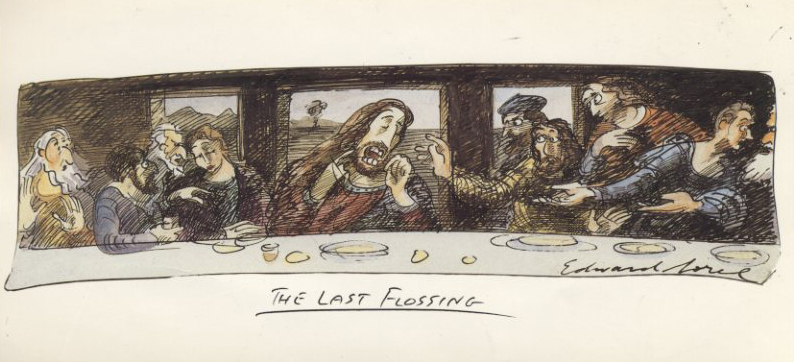artists
Mikhail Baryshnikov
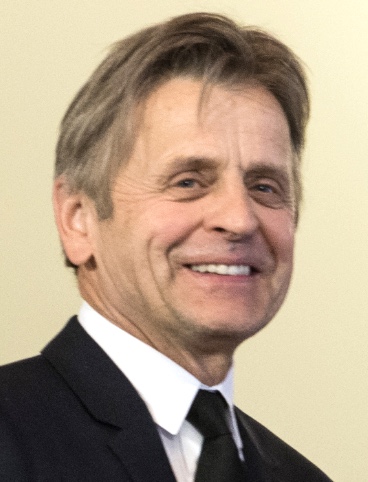
On this date in 1948, Mikhail Nikolaevitch Baryshnikov was born in Riga, Latvia. His father was an engineer and his mother was a seamstress who introduced him to ballet when he was 9. A strong athlete, Baryshnikov played sports in school but turned completely toward ballet when he was 12 after his mother committed suicide. At 15 he began studying with the Kirov Ballet, where he stayed for the next five years under the direction of Alexander Pushkin.
He became Kirov’s principal dancer at age 21 and began earning recognition for his strong technique and gravity-defying leaps. While on tour in Canada at age 26, he defected to America. Granted political asylum, Baryshnikov began working as principal dancer with the American Ballet Theatre (ABT) in New York, where he stayed for five years before joining the New York City Ballet. Working under George Balanchine and Jerome Robbins, he expanded his repertoire, as well as the role of male dancers in ballet. He then returned to ABT as principal dancer as well as artistic director, a position he held for 10 years.
In 1990 he teamed with choreographer Mark Morris to found the White Oak Dance Project and, in 2005, opened the Baryshnikov Arts Center in New York. Observing that the challenge of dancing different choregraphies and styles is similar to learning a new language, Baryshnikov wrote in his 1976 autobiography, “Every ballet, whether or not successful artistically or with the public, has given me something important. Everything that I’ve done has given me more freedom.” (Baryshnikov at Work).
He has appeared in the films “Turning Point” (1977) and “White Nights” (1985), on Broadway (“Metamorphosis”) and on television, in a regular role on HBO’s “Sex and the City.” Baryshnikov has been awarded the Kennedy Center Honors Lifetime Achievement Award (2000), Outer Critics Circle Award for Best Actor in a Play (1989), an Emmy for Outstanding Variety or Music Program (1979-80), an Emmy for Outstanding Individual Achievement-Special Events (1978-79) and an Oscar for Best Supporting Actor (1977).
Baryshnikov has four children, the oldest with actress Jessica Lange and the three youngest with ballerina Lisa Rinehart. They married in 2006 and live in New York as of this writing.
PHOTO: Baryshnikov in 2017; photo under CC 2.0.
"I don’t believe in marriage in the conventional way. I am not [a] religious person, and marriage in front of [the] altar wouldn’t say anything to me."
— interview, CNN "Larry King Weekend" (May 5, 2002)
Oksana Shachko
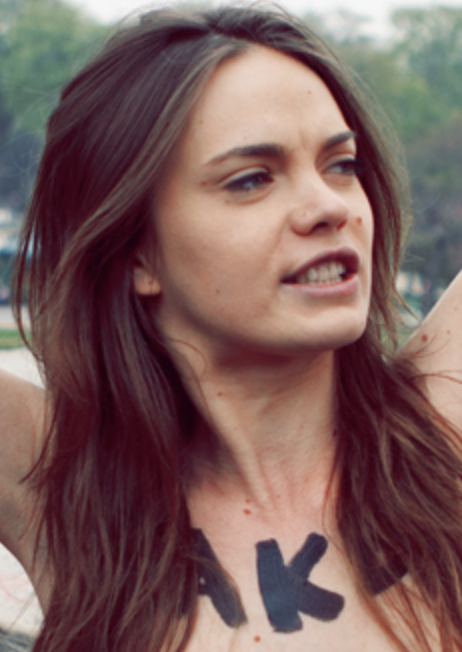
On this date in 1987, artist and activist Oksana Shachko was born in Khmelnytskyi, Ukraine. In 2008 she helped found FEMEN, a women’s rights group that garnered international notoriety for bare-breasted political protests. Along with the punk group Pussy Riot, FEMEN was part of the post-Soviet protest movement against corruption, wealth inequality, civil rights violations and the oppression of women and minorities.
According to the New York Times in 2018, “FEMEN members protested in Ukraine against sexual exploitation; in Davos, Switzerland — the scene of an annual conference of world political and business leaders — against income inequality; and, in St. Peter’s Square at the Vatican, against policies of the Roman Catholic Church, among other targets.”
In 2013 Shachko and other members of FEMEN were granted political asylum in France following persecution by Russian special services. Shachko claimed that due to FEMEN’s protests against President Vladimir Putin, pro-Putin agents had planted a grenade in front of her Kiev office along with a photo of Putin.
Shachko, who was interested in religious iconography from a young age, almost became a nun but was dissuaded from joining the nunnery by her parents. At the time of her death, she was working on an art installation entitled “Iconoclast,” wherein she painted traditional Orthodox icons, superimposing transgressive details and feminist messaging onto the icons in order to confront Orthodox religious dogma.
She was found dead at age 31 in her apartment in Paris after apparently hanging herself. (D. 2018)
"From this moment on, I began to reflect on what religion and faith mean to a human being. I found an answer, and it was atheism."
— Shachko, profile in 032c, an English-language magazine published in Germany (2016)
Jo Kotula
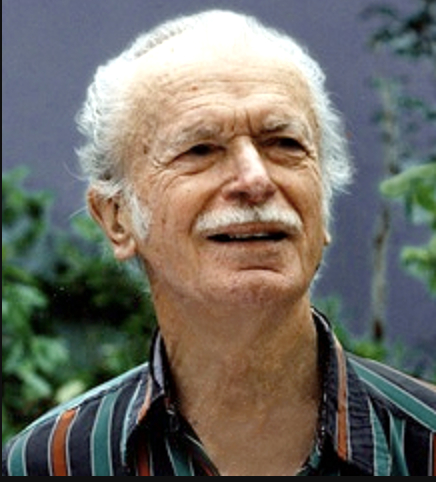
On this date in 1910, illustrator Josef “Jo” Kotula was born in Poland. He emigrated at 6 months of age with his parents to the U.S. His father worked as a Pennsylvania coal miner. Self-taught as an artist, Kotula became widely known for aviation art.
“Jo was a master of handling sunlight on bare aluminum,” according to the American Society of Aviation Artists, which inducted him into its Hall of Fame in New Jersey in 1999. His cover illustrations for Model Airplane News started in 1932 and continued for 38 years. His art also adorned the boxtops of model airplane kits.
He illustrated U.S. Air Force training manuals, acquired a private pilot’s license in 1936 and often delivered his work by air to clients around the country. His talent was such that it appeared in national magazines like the Saturday Evening Post, Collier’s, Newsweek and Popular Science.
He lived in the Midwest and Texas during early adulthood and met Charline Kirkpatrick in San Antonio. They married less than a month after their first date and moved east in 1931. They would have four daughters during their 66-year marriage — Jo Ann, Nella, Lynn and Orin — and a son, Kirk Patrick.
The Kotulas were early, heavily involved FFRF supporters and served as co-vice presidents of FFRF East in New Jersey. In 1954 they helped organize the Morristown Unitarian Fellowship and put up their house as collateral to borrow the money to buy a stately brick building to house the congregation. At a 1994 FFRF dinner there honoring them for their activism, Jo called the building “a haven for refugees from orthodoxy. We are here, we feel, not so much in our honor, but to celebrate, to dedicate our freedom of inquiry, our right to a healthy skepticism, to explore every avenue of thought open to scientific probing.”
Both were active as advocates for women’s reproductive rights, civil rights and immigrants’ rights, while opposing nuclear proliferation and the Vietnam War. After Charline’s death in 1995, FFRF specified that some of its annual Freethought Heroine awards be given in her memory. Jo died three years later at age 88. (D. 1998)
“It does appear that each of our thousands of denominations believes that its principles, its tenets, should have official recognition put forth by our secular government, imprinted on our currency, proclaimed in ceremonies with ringing bells from church steeples!”
— Kotula remarks at New Jersey recognition dinner (Freethought Today, May 1994)
Rosa Bonheur
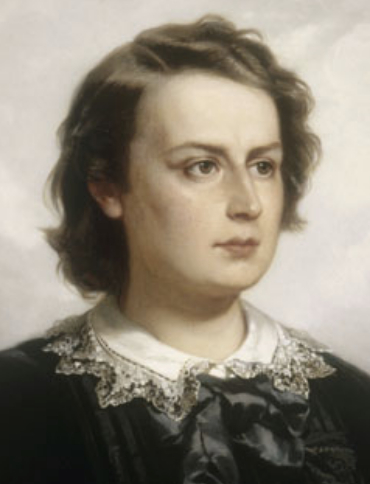
On this date in 1822, painter Marie-Rosalie Bonheur was born in Bordeaux, France, to a nominally Jewish family. All four children in the family became artists. Inspired by George Sand, with whom she was philosophically attuned, Bonheur started dressing in boys’ clothes in order to study animal anatomy, a sartorial habit of freedom she never abandoned. She visited slaughterhouses and also sketched at the horse market. Her painting, The Horse Fair, 1853, made her an international celebrity.
Bonheur was known for her unsentimental and realistic renderings of animals. She was exhibited regularly at Paris salons and became the first woman to receive the Grand Cross of the Legion of Honor. She had two female partners. She grew up with Nathalie Micas and then lived with her for 40 years. The American portraitist Anna Klumpke came into her life after Micas died. Bonheur viewed womanhood as superior to anything a man could offer or experience and said the only males she had time for were the bulls she painted.
Georges Cain, a painter and contemporary of Bonheur, wrote that she was “a philosopher of pantheist leanings. These ideas she was able to reconcile with a deep reverence for the Divine and a hatred for what she called ‘the Jesuits.’ By birth a Catholic, she neglected all outward religious observance.”
In her will dated Nov. 9, 1898, she directed that she wanted no priest at her deathbed but in order to be buried with Micas, agreed to forgo a civil funeral if need be, Bonheur told Klumpke shortly before she died at age 77. The three of them are buried alongside each other in Père Lachaise Cemetery in Paris. Bonheur’s painting “Monarchs of the Forest” sold at auction in 2008 for just over $200,000. (D. 1899)
"Yet, though I make this concession as to my body, my philosophical belief remains unalterable."
— Bonheur agreeing to a church funeral so she could be buried with Nathalie Micas, "Reminiscences of Rosa Bonheur," ed. Theodore Stanton (1910)
Kate Greenaway
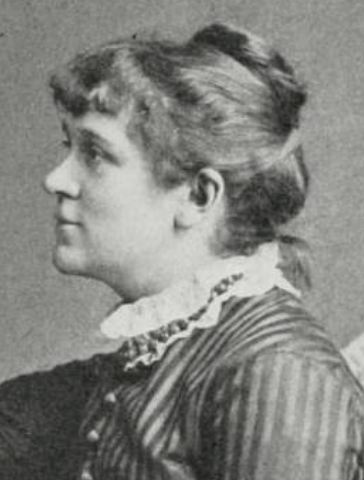
On this date in 1846, Kate Greenaway was born in London. Her father was an engraver for Punch and her mother was a seamstress. She attended a school of art as a teen, then the newly opened Slade School, where, as a female student, she was barred from life drawing classes involving nude models. She exhibited her first illustration in 1868.
Her delicate watercolors of children wearing simple, timeless frocks, landscapes and flowers are classics that are still instantly recognizable today. Greenaway’s oft-reprinted books include Illustrated Mother Goose (1881), the picture book Under the Window (1877), the Birthday Book and The Language of Flowers (1884). Her watercolors were exhibited at the Royal Academy from 1877 onward. She corresponded for 20 years with art critic John Ruskin and was not shy about expressing skepticism about religious claims.
Greenaway died of breast cancer at age 55. The British Library Association inaugurated a Kate Greenaway Medal in 1955 to be given to the best illustrator of children’s books. (D. 1901)
“Did you ever believe at all in religion, I mean did you ever believe it as the Bible gives it? I never did — it's so queer.”
— Greenaway letter to Violet Dickinson, July 10, 1896; "Kate Greenaway" by M.H. Spielmann and G.S. Layard (1905)
Edward Sorel
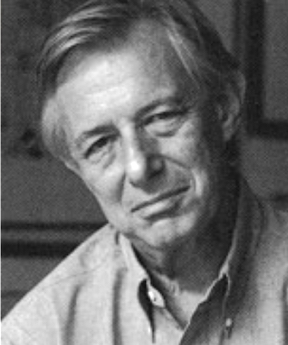
On this date in 1929, illustrator, artist and satirist Edward Sorel was born in Bronx, N.Y., to Morris and Rebecca (Kleinberg) Schwartz. He packs a lot of punch with few, and very often, no words. Look at Sorel’s “Pass the Lord and Praise the Ammunition” from 1967, for example. The color halftone poster, on display at the Smithsonian Institution’s National Portrait Gallery, depicts New York Cardinal Francis Spellman in clerical garb and Army boots on the advance, wielding a rifle with fixed bayonet.
The conservative Catholic cardinal had been military vicar general of the U.S. armed forces since 1939 and was an outspoken hawk on the Vietnam War. By 1967 he was out of step with many Americans. Just as Sorel was finishing the poster, Spellman died, so he waited till 1972 to use the image for the cover art of his book “Making the World Safe for Hypocrisy.”
Sorel is a regular contributor to The Atlantic and The New Yorker and many other publications. Besides his 41 covers for the latter, his art has appeared on the covers of The Atlantic, Harpers, Fortune, Forbes, The Nation, Esquire, American Heritage and The New York Times Magazine. He has illustrated many children’s books, three of which he also wrote. “Unauthorized Portraits,” a collection of his works, was published by Knopf in 1997.
He is a recipient of the Augustus St. Gaudens Medal for Professional Achievement from The Cooper Union, the Hamilton King Award from The Society of Illustrators, the Page One Award from the Newspaper Guild, the Best in Illustration Award from the National Cartoonists Society, the George Polk Award for Satiric Drawing and the “Karikaturpreis der deutschen Anwaltschaft” from the Wilhelm Busch Museum in Hanover, Germany. In 2001 the Art Directors Club of New York elected him to its Hall of Fame.
Sorel graduated from the Cooper Union in 1951 and co-founded Push Pin Studios with Milton Glaser and Seymour Chwast in 1953 before embarking on a very successful freelance career. In a 1997 interview, he was asked what issues he felt especially strong about and was inspired to address. He answered, “I’m one of those who regard organized religion as a dangerous force. I try whenever possible to do anti-clerical cartoons. The only place that will print them is The Nation, which has a very small circulation and pays almost nothing.” (The Atlantic, Nov. 6, 1997)
Sorel, sitting for a joint interview with fellow artists Jules Feiffer and David Levine in 2003, was asked about earlier saying he hated the Bush administration and Saddam Hussein. “All I said was that we have our religious fanatics fighting their religious fanatics, which leaves me without a side to root for,” he replied.
In 1998 the National Portrait Gallery in Washington, D.C., devoted several rooms to an exhibition of his caricatures. The introduction to the “Unauthorized Portraits” exhibit said Sorel’s “potent spoofs of public figures … skewered pomposity wherever it appeared or simply mused on the exquisite oddness of the human comedy.”
The exhibit had three sections — history, entertainment and the arts and politics: “From Moses leading his kvetching people (‘Some miracle! If I don’t get pneumonia, that’ll be a miracle’) through the parted Red Sea waters, to George Gershwin teaching Fred Astaire a dance step, to Madonna seen as a ‘horseperson of the apocalypse.’ ” Below, he reimagines da Vinci’s “The Last Supper.”
Sorel’s “The Last Flossing” (1992)
—
J.M.W. Turner
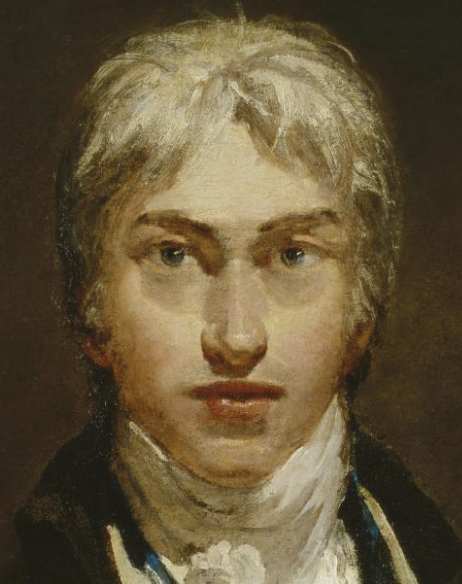
On this date in 1775, Joseph Mallord William Turner was born in London. A precocious artist, he was 15 when one of his paintings was exhibited at the Royal Academy, a great honor.
He became a highly successful painter who traveled widely and innovated his own light-filled technique. His brilliant paintings, notably of seascapes or ambitious, romantic visions of nature, anticipated impressionism. The critic John Ruskin called him “the father of modern art.” When Turner died, he left all of his paintings to Great Britain and his fortune to found a place for what he called “decaying artists.”
According to Joseph McCabe’s A Biographical Dictionary of Modern Rationalists (1920), Ruskin often referred to Turner as “an infidel.” P.G. Hamerton in The Life of J.M.W. Turner (1879) wrote that the painter “did not profess to be a member of any visible Church.”
Franny Moyle, author of Turner: The Extraordinary Life and Momentous Times of J.M.W. Turner (2016), said in a 2017 interview with the History News Network: “My personal hunch is that he may well have been a Deist. Much of his work resounds with Deism that was popular in London in the 1790s and was espoused by those who opposed organized religion and considered instead that nature provided the necessary and sufficient means to experience God.”
Turner never married but had two long-term relationships with women and fathered two daughters by one of them, Sarah Danby. He died of cholera at age 76 in 1851.
PHOTO: Turner self-portrait, cropped.
“As a child he was sent to a Methodist school in Margate, but as a young man there are accounts of him eschewing church in favor of continuing to sketch.”
— Biographer Franny Moyle on Turner, History News Network interview (April 21, 2017)
Eugène Delacroix
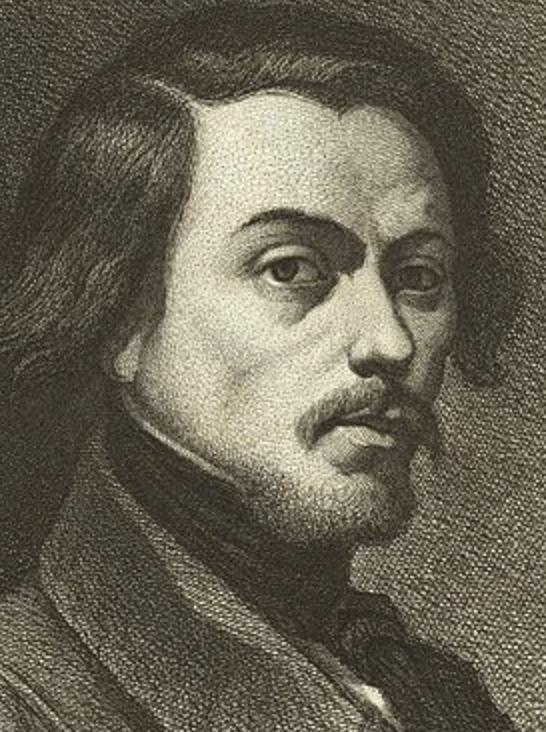
On this date in 1798, Eugène Delacroix was born in France. The painter was part of the Romantic movement and was known for such swashbuckling and colorful canvases as “Liberty Leading the People to the Barricades,” which marked the Revolution of 1830. One of his quieter canvases was a poignant, unfinished portrait of Chopin, which hangs in the Louvre.
Art historian Étienne Moreau-Nélaton wrote that Delacroix read and agreed with Diderot and Voltaire and had a secular funeral. (D. 1863)
“He wasn’t a practicing Christian. The subjects of his religious works were mainly well-known themes from the New Testament.”
— Biographical entry on Delacroix from Art and the Bible website
Maurice Sendak
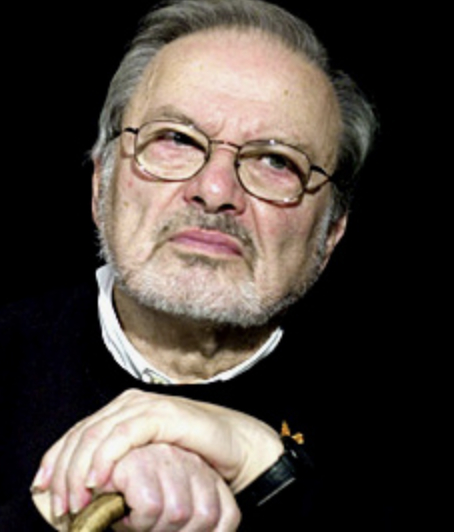
On this date in 1928, children’s book illustrator and author Maurice Sendak was born in New York City. Sendak graduated from The Art Students League of New York. His career spanned more than 50 years. He began to illustrate other authors’ books when he was in his 20s. Throughout his career he illustrated more than 75 books and wrote more than 20.
Sendak is best remembered for writing and illustrating Where the Wild Things Are (1963). His other works include In the Night Kitchen (1970), Seven Little Monsters (1977) and Outside Over There (1981). His iconic books and illustrations have spawned movies, stuffed animals and other toys.
He received numerous honors for his work, including the Caldecott Medal (1964, 1974), the Laura Ingalls Wilder Medal (1983), the Hans Christian Andersen Award (1970) and the Astrid Lindgren Award (2003). Sendak’s lifelong partner of 50 years, psychoanalyst Dr. Eugene Glynn, died five years before he did. (D. 2012)
“I’m not unhappy about becoming old. I’m not unhappy about what must be. It makes me cry only when I see my friends go before me and life is emptied. … It’s harder for us nonbelievers.”
— Sendak, interview with Terry Gross, NPR (Sept. 20, 2011)
Lalla Ward
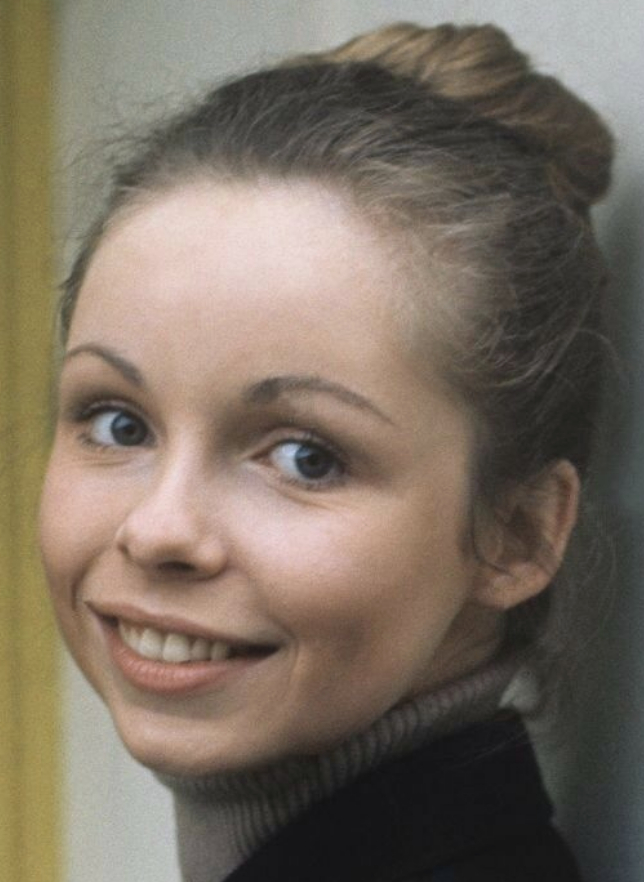
On this date in 1951, Sarah “Lalla” Ward was born in London to Edward Ward, 7th Viscount Bangor, and his fourth wife, Marjorie Alice Banks. The name Lalla comes from her attempts as a toddler to pronounce her first name. She studied drama at the University of London’s Central School of Speech and Drama, where she graduated in 1971.
She has had a successful acting career, which included playing Ophelia in the 1980 movie “Hamlet, Prince of Denmark.” She also starred as the doctor’s companion, Romana, in the popular TV show and longest running sci-fi series “Doctor Who” from 1979-81.
Ward was married to atheism advocate and evolutionary biologist Richard Dawkins. They wed in 1992 after being introduced by mutual friend Douglas Adams, the author of “The Hitchhiker’s Guide to the Galaxy.” They jointly announced an “entirely amicable” separation in 2016. Ward has written three books, two on knitting and one on embroidery, and her artwork has also been featured in calendars. She also illustrated many of Dawkins’ books.
PHOTO: A young Lalla Ward, date unknown.
"We are both strongly non-religious, and we have similar views on what’s important in life."
— Richard Dawkins in "How We Met: Richard Dawkins and Lalla Ward" (The Independent, June 19, 1994)
Frida Kahlo
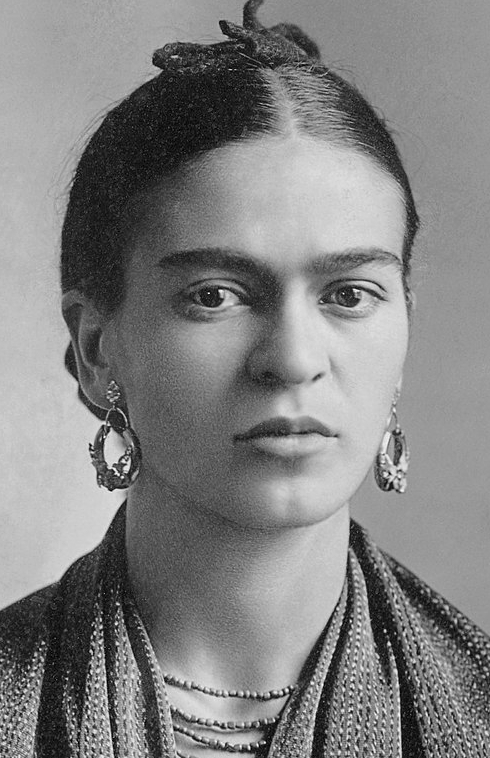
On this date in 1907, Magdalena Carmen Frida Kahlo y Calderón was born in Mexico, the daughter of an atheist German immigrant father and a Mexican/indigenous Catholic mother. Her painting career was born of pain and boredom during a lengthy convalescence following impalement in a horrific streetcar accident. The 18-year-old suffered a broken spine and pelvis, 11 leg fractures and a crushed foot but learned to walk again. She famously married atheist painter Diego Rivera in 1929 but divorced him for infidelity in 1940. They remarried the next year.
Rivera encouraged her to adopt her trademark, colorful Mexican garb. The strikingly beautiful woman also boasted a trademark “unibrow,” which she meticulously documented in her many self-portraits. Kahlo sometimes wove blasphemous themes into her surreal paintings and depicted herself as a secular, medical martyr. Unhappy with U.S. values during an extended stay there in the 1930s, she painted a montage of images that included a dollar sign wrapped across the cross on a church.
Kahlo once referred to Rivera as the second major accident of her life. The tempestuous radicals were always controversial in their private and public lives. She was rumored to have had a love affair with the exiled Leon Trotsky and painted an adulatory picture in 1954 called “Stalin and I.” She was bisexual and openly explored relationships with women, including Dolores del Rio, Paulette Goddard, Josephine Baker, Georgia O’Keeffe and others. Her status in the LGBTQIA+ community is iconic.
The year before her death, her right leg had to be amputated below the knee due to gangrene, which had started in her toes. She died at 47, probably at her own hand. The New York Times obituary reported that she was believed to be the first woman to sell a painting to the Louvre. Actress Salma Hayek fought hard to bring to life the movie “Frida” (2002), in which she portrayed the artist and was co-producer. (D. 1954)
Public domain photo: Kahlo at age 25 photographed by her father Guillermo.
“I hope the exit is joyful — and I hope never to return.”
— Kahlo diary entry a few days before her death.
Camille Pissarro
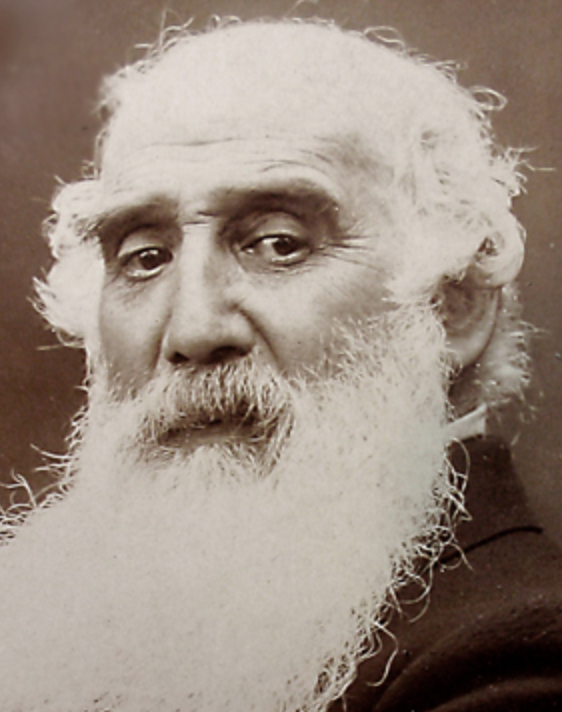
On this date in 1830, impressionist painter Jacob Camille Pissarro was born on the island of St. Thomas in the West Indies to Frederic Pissarro and Rachel Petit. Their ancestors were Sephardic Jews forced to convert to Catholicism by the Catholic Inquisition. Pissarro was sent to a boarding school outside of Paris at age 11. At 17, he returned to St. Thomas to work in the family business. Deciding at age 20 that the life of a clerk was not for him, he left for Venezuela to paint, eventually returning to France, where he lived the rest of his life.
Pissarro married a non-Jewish woman, whom his mother never accepted, providing more reinforcement for Pissarro of the problems caused by religion. Often compared to the painter Millet, Pissarro was quick to point out that “[the critics] all throw Millet at me, but Millet’s art was biblical. For the Hebrew that I am, there is very little of that in me; isn’t that funny?” (Exhibition catalogue, Jerusalem Museum, 1994)
Most of Pissarro’s paintings are landscapes, focusing on the forms and colors of nature. He developed a new technique of brushwork “to capture the play of light and create a sense of movement, producing images with a soft and welcoming aesthetic [and] when figures are included they function as elements of light and air.”
Pissarro was an atheist and self-defined freethinker, both philosophically and in his art. While never denying his Jewish heritage, he felt that it made him an outsider. In 1894 the famed Dreyfus Affair was on everyone’s tongue and sides were drawn. Among those against Dreyfus were some of Pissarro’s oldest friends: Cezanne, Renoir and Degas. Pissarro’s support of Dreyfus was linked not only to the overt anti-Semitism in the case but also to his dislike of the bourgeoisie and capitalism.
Paul Signac observed in his diary, “Pissarro tells me that since the anti-Semitic incidents, Degas and Renoir shun him and no longer greet him. What can be taking place in the minds of such intelligent men that leads them to become so stupid?” (D. 1903)
“He didn’t turn his back to Judaism, but was against the idea of God or organized religion.”
— Joachim Pissarro, on his great-grandfather in "Camille Pissarro" (1993)
Matthew Sweet
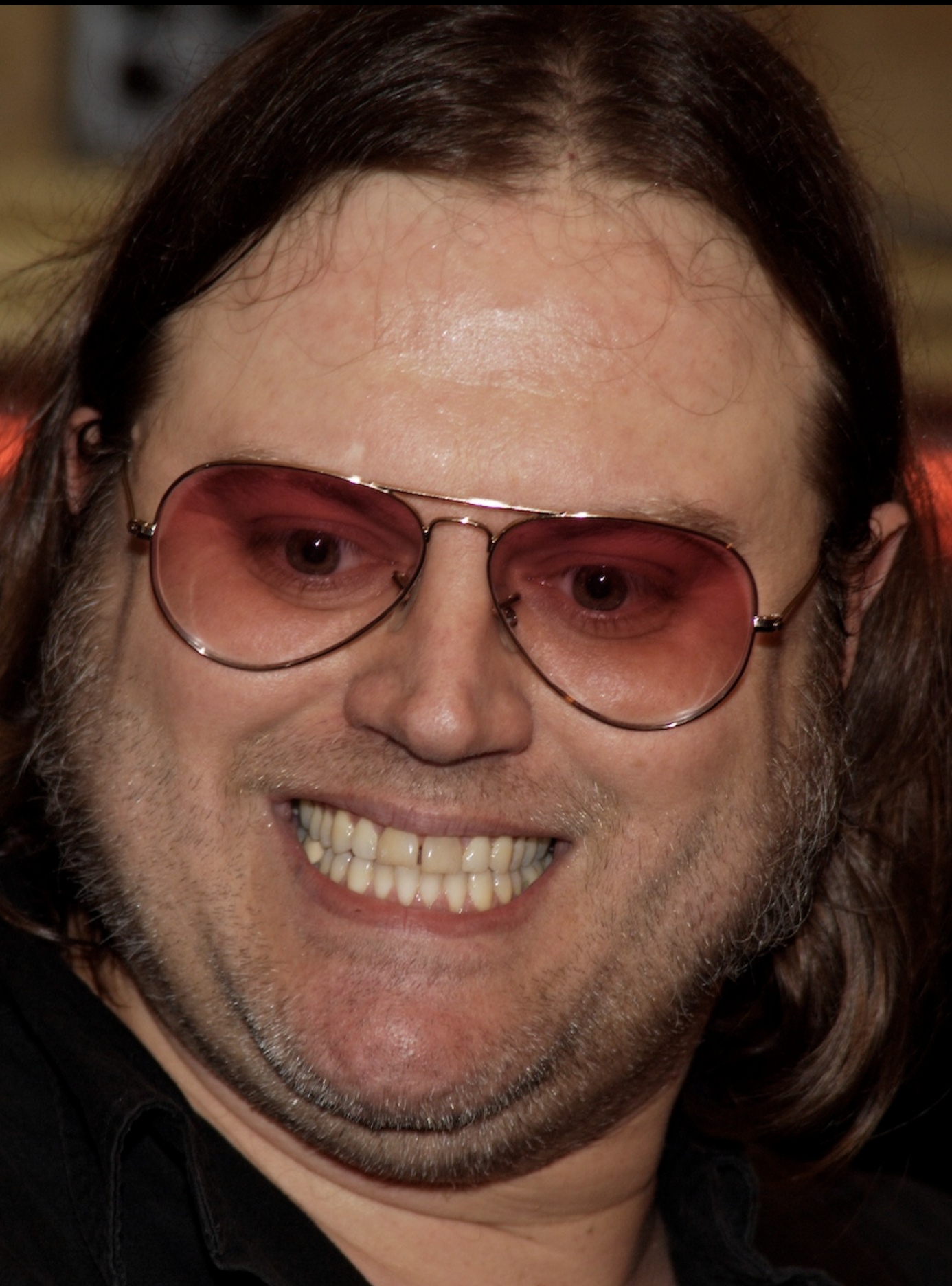
On this date in 1964, Sidney Matthew Sweet was born in Lincoln, Neb. He briefly attended the University of Georgia in 1983 before dropping out to focus on his music. Sweet is a singer, guitarist, bassist and keyboardist who has been writing and recording music since he was a teenager. As of this writing, he’s recorded 22 albums, many in the “power pop” genre, including “Girlfriend” (1991), “Altered Beast” (1993), “100% Fun” (1995), “Sunshine Lies” (2008), “Completely Under the Covers” (2015, with Susanna Hoffs, a box set of all three “Under the Covers” albums), “Tomorrow Forever” (2017) and “Tomorrow’s Daughter (2018).
In 2010, playwright Todd Almond made “Girlfriend” into a rock musical. His songs have been included in numerous television and film soundtracks. He also makes and sells pottery and owns the Lolina Green Pottery Studio. He lives in Omaha with his wife Lisa.
When asked by The Onion in 2000 if he believed in God, Sweet replied that he believes in nature: “I don’t think there’s a God like the God everybody’s taught about.” In 1991 he recorded “Divine Intervention,” which Slant magazine in 2004 called “the most melodic paean to agnosticism ever written.” In a 2016 interview with Magnet magazine, Sweet said, “People see what they want in ‘Divine Intervention.’ If they’re religious, they might think, ‘Awesome. That’s when God comes.’ But I was saying that he’s not. I was coming out as an atheist, in a way.”
PHOTO: Sweet in 2006; photo by Charlie IIevwellin under CC 3.0.
I’ve spent twenty years learning to live
In a world that takes back all that it gives
But I do not want a war
‘Cause I’m not in for killing another man
Defending my holy land
As if there’s a god who would understand.— From Sweet's song "Holy War" on the 1991 album "Girlfriend"
Auguste Rodin
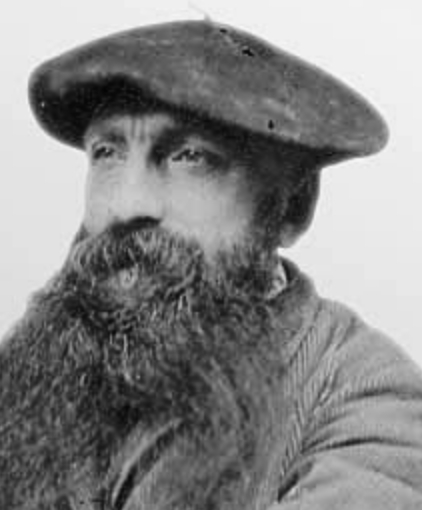
On this date in 1840, sculptor François Auguste René Rodin was born in Paris to working-class parents. From ages 14 to 17 he attended the Petite École, a school specializing in art and mathematics. After being rejected three times by the École des Beaux Arts, he carved decorative stonework for income. In 1862, grief-stricken by the peritonitis death of his sister Marie, he entered the Catholic Congregation of the Blessed Sacrament but soon realized religion was not for him.
As a struggling artist, he met Rose Beuret, a seamstress who became his life companion and model. In 1875 Rodin traveled to Italy and was influenced by Michelangelo, to whom he was compared as his fame grew. Rodin created “The Age of Bronze,” which was exhibited in the Paris Salon in 1877. It was so realistic that critics accused him of casting the sculpture from a live model. The sculpture and the controversy around it catapulted him to fame. In 1883 at age 43, he started a passionate but stormy relationship with 18-year-old Camille Claudel. They influenced each other artistically, while Rodin maintained his ties with Beuret, with whom he had a son.
His most famous sculptures include “The Thinker,” “The Kiss” and his statue of Honoré de Balzac. The Biron Hotel in Paris, which he had saved and worked in, has become the lovely Musée Rodin, where his sculpture is on display as he left it.
Rodin died at his home in Meudon at age 77 and had a secular funeral. (D. 1917)
“The symbolism and philosophy of the artist are independent of any religious doctrine.”
— Biographer Camille Mauclair, "Auguste Rodin: The Man, His Ideas, His Works" (1905)
Marie Bashkirtseff
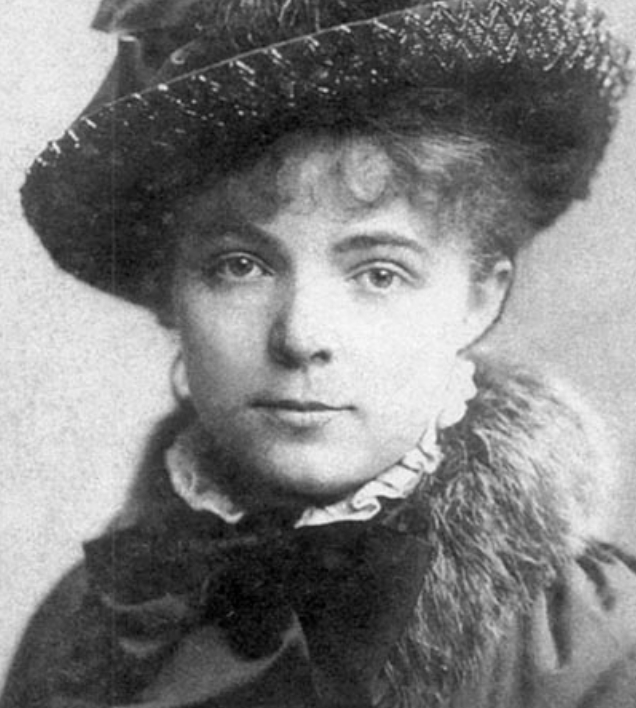
On this date in 1858, artist Marie Bashkirtseff was born in what is now Ukraine to a wealthy noble family. She grew up in France and Italy and studied painting in Paris. Although a number of her paintings were destroyed by the Nazis during World War II, she is still well-known for two canvasses: “The Meeting,” depicting Parisian slum children, and “In the Studio,” depicting fellow artists at work.
From the age of 13, she kept a journal that included her correspondence with writer Guy de Maupassant. The first volume of her diary was published in 1890 and is titled I Am the Most Interesting Book of All. She wrote several articles for Hubertine Auclert’s feminist newspaper La Citoyenne in 1881 under the nom de plume “Pauline Orrel.” One of her most-quoted sayings: “Let us love dogs, let us love only dogs! Men and cats are unworthy creatures.”
Her later journal entries, first published posthumously in the journal Revue des Revues in 1900, reveal her skepticism. Her religious beliefs were complicated and shifted during her short life. In 1881 she wrote about “having been a Deist, with days of absolute atheism,” while adding she was “praying to Christ and the Virgin” and commenting that established religion had very little to do with Christ’s teaching.
She died of tuberculosis at age 25 in Paris. (D. 1884)
PHOTO: Bashkirtseff at age 20.
“The Church has lowered God, disfigured religion, or, rather, has created, instead of the worship we owe to God, a complicated religion, full of charlatanism, which must be destroyed.”
— "The Journal of Marie Bashkirtsef," translated with an Introduction by Mathilde Blind (1890)
William Blake
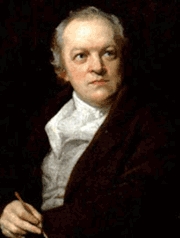
On this date in 1757, poet and artist William Blake was born in London to shopkeepers. He enrolled in a drawing school at age 10, then apprenticed to an engraver at 14. After his seven-year apprenticeship, he became a journeyman copy engraver at age 21. He was admitted to the Royal Academy of Art’s School of Design in 1779. His book of poetry, Poetical Sketches, was published in 1783. Blake set up a printing and publishing partnership in 1784 and invented relief etching in 1788.
His first decorative, “illuminated” books of aphorisms, All Religions Are One (1787) and There Is No Natural Religion (1788), were influenced by the Swedish mystic Emanuel Swedenborg. He had become disillusioned with Swedenborg by the time he produced Songs of Innocence (1789) and The Marriage of Heaven and Hell (1790). He began to rub shoulders with London’s leading rationalists and reformers, composing and engraving designs for Mary Wollstonecraft‘s Original Stories from Real Life (1791). He met William Godwin, Joseph Priestley and Thomas Paine.
It was said Blake tipped off Paine about an impending arrest and helped him flee. Although Blake lived in the imagination and was theistic rather than rational by temperament, he was also staunchly unorthodox: “As the caterpillar chooses the fairest leaves to lay her eggs on, so the priest lays his curse on the fairest joys.” (“Proverbs of Hell,” from The Marriage of Heaven and Hell) His ethical advice? “A truth that’s told with bad intent / beats all the Lies you can invent.” (“Auguries of Innocence,” 1803)
Wordsworth wrote after Blake’s death, “There was no doubt that this poor man was mad, but there is something in the madness of this man which interests me more than the sanity of Lord Byron and Walter Scott.” (D. 1827)
"Prisons are built with stones of Law, Brothels with bricks of Religion.”
— Blake, "Proverbs of Hell" (1790)
Diego Rivera
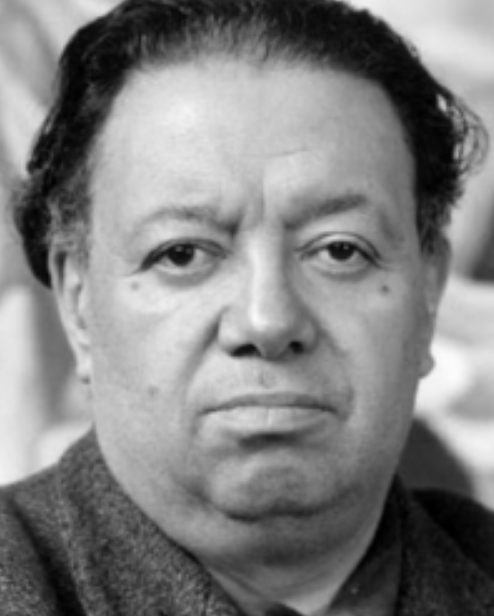
On this date in 1886, painter Diego Rivera was born in Guanajuato, Mexico. Rivera attended art school at the Academy of San Carlos in Mexico City. He then traveled to Europe to study art, later incorporating what he learned about Renaissance frescoes (painting on wet plaster) in his murals. In 1921, he returned to Mexico and became a chronicler of the people via a series of murals. Rivera, along with fellow Mexican painters Jose Clemente Orozco and David Alfaro Siqueiros, led the peoples’ mural movement. Their murals were usually located in public places and reflected social, political and national themes.
His monumental stairway mural in Mexico’s National Palace, Mexico City, is unabashedly critical of religion, particularly the Catholic invaders of Mexico, shown as conquerors conducting autos-da-fé. The mural depicts the mythical and precolonial, pre-Christian history of Mexico and records the Spanish enslavement of native Indians. The final mural, which depicts various injustices toward the people, goes after a triumvirate of “Banker, Army, and Church.” A priest is shown cavorting with a woman en dishabille.
Rivera’s most famous mural is “Man, Controller of the Universe.” He painted it in 1934 as a recreation of his mural “Man at the Crossroads,” which was commissioned by Nelson Rockefeller and then destroyed because Rivera refused to remove a portrait of Lenin from the mural. “Man, Controller of the Universe” represents the world in the 1930s and contains portraits of Lenin and Leon Trotsky. Rivera painted “Dream of a Sunday Afternoon in Alameda Park” between 1947 and 1948. This mural originally included the image of the activist and atheist Ignacio Ramirez holding a sign inscribed “Dios no existe.” Because Rivera refused to remove the inscription, the hotel that held the mural refused to show it. Rivera eventually removed the inscription nine years later and reaffirmed his atheism.
Rivera married several times, most famously to painter Frida Kahlo, 20 years his junior. They were married from 1929-39 before briefly divorcing and remarrying in 1940. She died in 1954. (D. 1957)
“To affirm ‘God does not exist’, I do not have to hide behind Don Ignacio Ramírez; I am an atheist and I consider religions to be a form of collective neurosis.”
— Rivera, "Siqueieros: His Life and Works" by Philip Stein (1994)
Henri Matisse
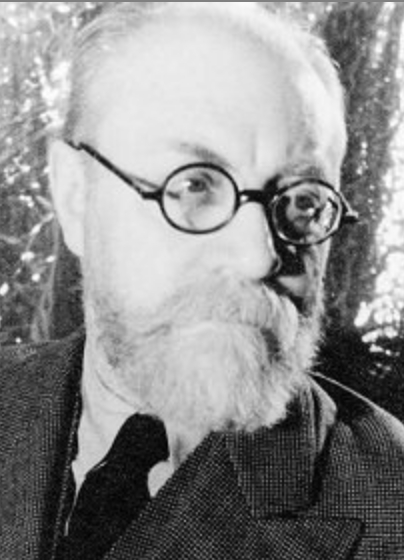
On this date in 1869, artist Henri Émile Benoît Matisse was born in Le Cateau, Picardy, France. Although he had studied for the law, Matisse discovered his passion for painting while convalescing from a serious illness at age 21. Matisse studied the work of Cezanne, Monet and Seurat and worked with Paul Signac and Andre Derain.
In 1905 he was dubbed King of the Fauvists (“Wild Beasts”), despite his gentlemanly habits. Fauvism was characterized by intense color and a faux-primitive style that shocked the art world. In 1906 he unveiled his most famous work, “The Joy of Life.”
With the model Caroline Joblau, he had a daughter, Marguerite, born in 1894. In 1898, he married Amélie Noellie Parayre; the two raised Marguerite together and had two sons, Jean (born 1899) and Pierre (born 1900). He was awarded the French Legion of Honor in 1925.
Amélie, estranged from Matisse, was a typist for the French Underground during World War II and was jailed for six months. Marguerite, who was active in the resistance, was tortured by the Gestapo and sentenced to the Ravensbrück concentration camp in Germany but managed to escape from the train.
In 1941 he was diagnosed with duodenal cancer and was confined the rest of his life to a wheelchair but never gave up his art. Biographer Henry Spurling in The Unknown Matisse (1998) called Matisse “a staunch atheist.” He died at age 84 and is buried in the cemetery of the Monastère Notre Dame de Cimiez in Nice. (D. 1954)
"Ever since there have been men, man has given himself over to too little joy. That alone, my brothers, is our original sin. I should believe only in a God who understood how to dance."
— Matisse, cited in "Who's Who in Hell" by Warren Allen Smith. (This quote is akin to Nietzsche's "I would only believe in a God who knew how to dance" in "Thus Spoke Zarathrustra.")
